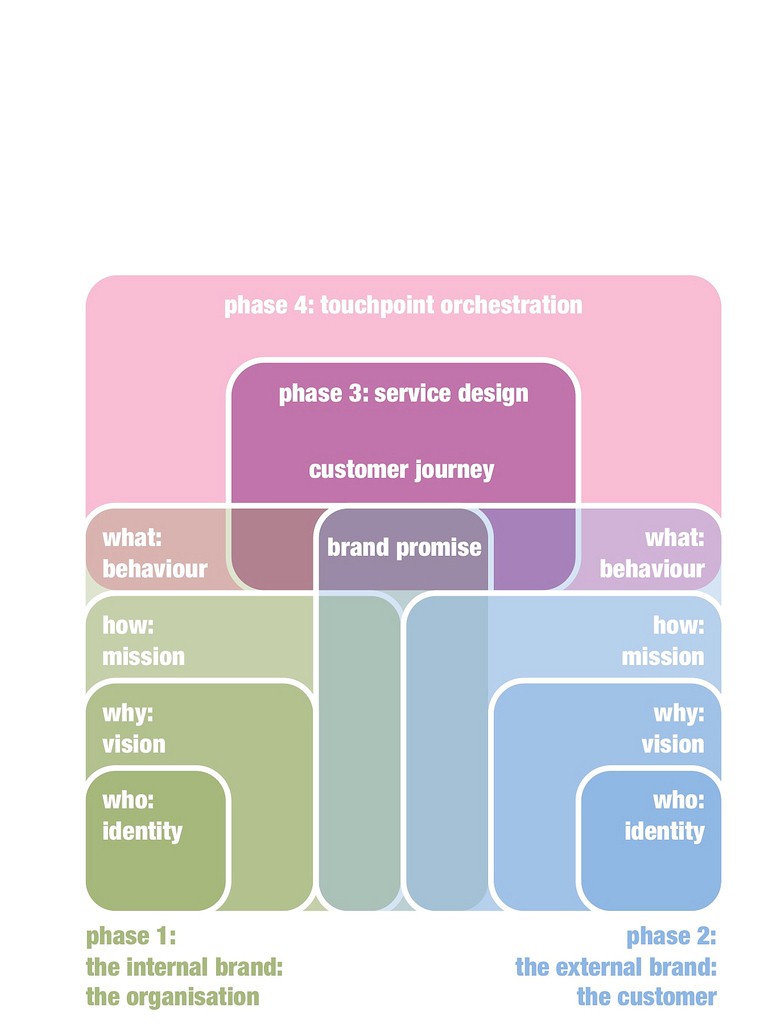University leadership teams are currently planning what delivery will look like next academic year. A form of blended learning will likely be maintained even if social distancing rules are relaxed. Educational technology and academic development teams will need to restructure their services to provide academic departments with the support they need to transition from this year’s delivery model to a more sustainable and quality-driven model for the future. But what does that service offer look like and how can it be designed to provide freedom for academic teams to explore what this new future looks like?

Erik Roscam Abbing’s brand model could be used as a starting point for Edtech teams to create their new service blueprint. The starting point is to map out the team’s own identity, vision, mission, and behaviours. An understanding of the Capability Maturity Model can also input into the team’s desired brand. I have added below my current thoughts on the first phase for my team. If you have any questions or want to collaborate on ideas, get in contact with me on Twitter @samueljtanner.
Team Identity
We have moved towards a Learning Design skill set in the team rather than the more traditional Learning Technologist. Each member of the group would consider themselves as a ‘techie’ and has an expertise that sits somewhere in the nexus of three core technical skills; Learning and teaching, multimedia and technology development, and design. Learning Designers operate as project managers, follow design thinking methodologies using personas and prototypes, and adopt a scholarly approach to quality assurance and continuous improvement practices.
Vision
We believe in the transformational nature of technology, and that learning and teaching can be made better when technology is used to design student centred experiences. Teachnology allowed learning and teaching to be:
- Flexible: accessible to anyone that wants to learn, at whatever stage of life they are at, and whatever their context.
- Personalised: designed to meet students individual goals and provide choice as these change.
- Active and collaborative: engaging learning experiences that prepare students with the skills they need for the workplace, including problem-solving, teamwork, communication, and resilience.
- Redefined: using technology to create student experiences previously impossible with physical constraints.
Mission
By 2025, all students will have a flexible, personalised, and active and collaborative learning experience that uses technology to provide better learning outcomes.
Behaviour
We are:
- partnering with academic teams to co-design modules and courses
- defining what quality looks like and how to get there sustainably
- sharing ideas of what is possible and what works
- building an easy to use and seamlessly integrated technology ecosystem that provides the tools needed
My ideas will be different from yours
The ideas here are just a brain dump around the direction I am taking my team, but I suggest using the same framework for your institution. Phase two will look at the identity, vision, mission, and behaviour of those teaching at university. My team is a service for academic departments to help them teach students, and so our customers are the lecturers. It is a time of disruption for the role of academics, and the answers to the questions in phase two will be very different now than six years ago when I moved from further education to the university sector. I have some research to do, but I imagine that brand promise will be something along the lines of…
Brand promise: Your Learning Designer will help you design, develop, and deliver a flexible module quicker, easier, and provide a better student experience than if you had done it independently.
2 thoughts on “Using Abbing’s brand model to develop a service offer”
Comments are closed.